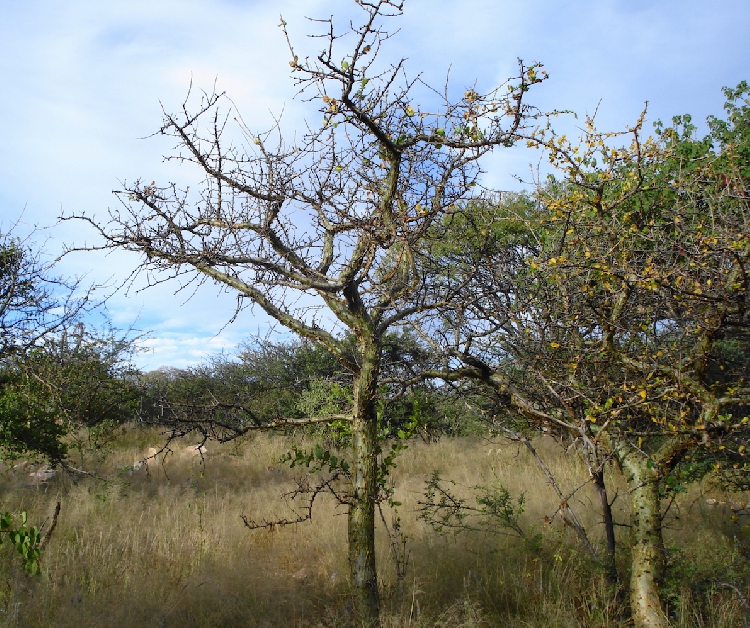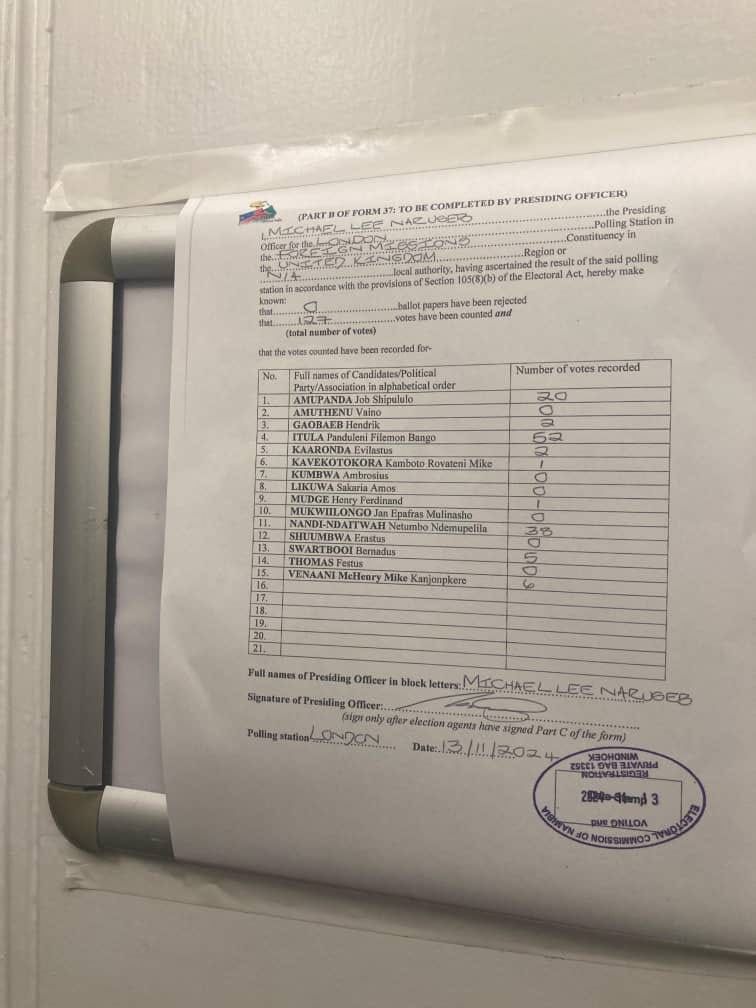•Luise HoffmannTHE tall common cork wood is fairly easy to recognise by its straight, smooth, dark green trunk covered by a papery, yellowish brown peeling bark. It occurs widely but scattered from around Rehoboth northwards up to the northern border of Namibia.
Names: G. Drüsen-Myrrhe; A. Gewone groot kanniedood H omukange. The genetic name Commiphora means ‘bearing resin’ and refers to the sticky and often aromatic resin of these trees. The specific name glandulosa refers to the glandular hairs on the calyx of these trees.
This characteristic is not easy to recognise because often, when one finds these trees in the bush, the inconspicuous flowers and the calyx have already withered. The common name refers to the soft, corky wood of trees of this genus.
The leaves of both these species are simple and inversely egg-shaped with a wedge-shaped base. On young growth they may consist of three leaflets, the two additional leaflets being much smaller than the terminal one.
The margins are usually scalloped or serrate, sometimes entirely. The leaves are shiny dark green above and somewhat lighter below with a prominent midrib and clearly visible net-veining. They measure 8-30 x 4-15 mm and are either spirally arranged or clustered on short branchlets, which are often spine-tipped.
Small inconspicuous male and female flowers appear on separate trees from October to January and their calyx is covered with glandular hairs.
The round fruits measure 14 mm in diameter and turn red when ripe. When lightly pressed, the ripe fruit will split neatly in half to show the black seed embedded as in a tiny jewellery box.
The seed is surrounded by a dark red fleshy substance, the pseudaril, the four arms of which cover the seed almost entirely. This type of seed is very typical of almost all Namibian cork wood trees and each species has a differently shaped or coloured pseudaril.
Truncheons – branches about the thickness of an arm – stuck in the soil will root and develop into trees very easily. The Afrikaans name “Kanniedood”, meaning ‘cannot die’, refers to this characteristic.
In northern Namibia living fences or hedges are often planted using this tree. The wood is white and soft and is used for carving household articles. It is also used as the base for making fire by friction.
The fire-thorn cork wood or common cork wood (Commiphora pyracanthoides) is very similar as far as leaves, flowers and fruit are concerned but the calyx is bare. It usually is a densely branched, many-stemmed shrub of 0.5-2.5 m.
This species has more or less the same area of distribution as the tall common corkwood. As the glandular hairs on the calyx are difficult to find at most times of the year the species for practical purposes have to be distinguished by size and growth form alone. The roots of the fire-thorn cork wood are juicy, sweet and edible.
They are scraped clean and chewed to quench one’s thirst. They are also dug up and eaten by elephants. Pulverised wood is used as snuff.
There are 30 species of cork wood or myrrh trees known to occur in Namibia, many of them endemic. The greatest diversity of these plants is found in the north west.
Stay informed with The Namibian – your source for credible journalism. Get in-depth reporting and opinions for
only N$85 a month. Invest in journalism, invest in democracy –
Subscribe Now!






